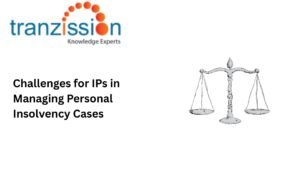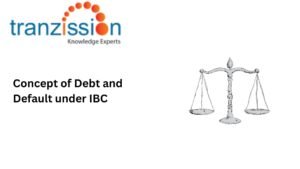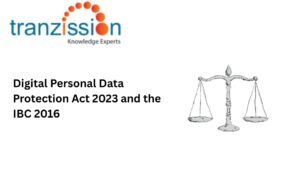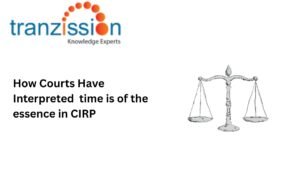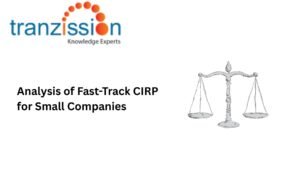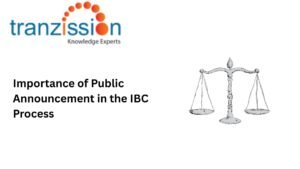
Forensic Audit in the Insolvency and Bankruptcy Code, 2016
Table of Contents
The insolvency process is designed to streamline the insolvency and liquidation proceedings in a time-bound manner. The resolution professional utilise forensic audit to ensure the insolvency or liquidation proceedings are fair and transparency, identifying any transactions by the corporate debtor that may affect the recovery of its creditors.
What is a Forensic Audit?
A forensic audit is a specialised accounting procedure that examines a company’s financial records to detect fraud or other financial irregularities. It involves a detailed examination of financial records to identify discrepancies, fraudulent transactions, or non-compliance with legal obligations.
Read more : Link between section 230 of the Companies Act and IBC
Purpose of Forensic Audit in Insolvency Law
The main purpose of forensic audit in insolvency law is to enable stakeholders to maximise their recovery. Forensic audits can help identify asset misappropriation, fraudulent transactions, undervalued transactions, extortionate credit transactions, and preferential transfers by the corporate debtor. Therefore, the audit can help prevent fraud and corruption which may lead to inefficiencies, financial and legal challenges, and breach the fairness and transparency of the corporate insolvency resolution process (CIRP). The audit can be used to gather evidence for court proceedings in insolvency law.
Forensic Audit in the Context of IBC
Forensic audit under the Insolvency and Bankruptcy Code, 2016 (IBC) helps detect fraud by examining financial statements for transactions such as preferential transactions, undervalued transactions, and extortionate credit transactions.
Legal Framework:
Although the IBC does not provide specific provisions on forensic audits, as per the purpose of forensic audits and IBC provisions, the legal framework governing forensic audits can be implied. Sections 43-51 of the IBC provide provisions related to fraudulent transactions, preferential transfers, and undervalued transactions. The IBC does not require the resolution professional to appoint a forensic auditor, but, if needed the resolution professional can take athe id of an auditor. Hence, this audit serves as a tool for resolution professionals to investigate these transactions.
Applicability:
These audits are typically initiated in CIRP and liquidation proceedings to uncover any fraudulent transactions, such as related party transactions, siphoning funds, etc., to recover the funds for creditors. It can also provide accurate financial information about the company’s health by scrutinising transactions to make more informed decisions during the insolvency process.
NCLT’s Role:
The National Company Law Tribunal (NCLT) may order a forensic audit when it believes that an independent audit will provide a fair and transparent picture of a corporate debtor’s affairs and benefit all stakeholders of the corporate debtor. It mandates forensic audits in cases of suspected financial mismanagement or fraud.
Objectives of Conducting Forensic Audits in Insolvency
The primary objective of conducting a forensic audit in insolvency cases is to thoroughly investigate a company’s financial records to detect any fraudulent transactions, misappropriation of assets, or other irregularities that may have contributed to insolvency:
Read more : Importance of Public Announcement in the IBC Process
Detecting Fraudulent Activities:
A forensic audit involves an in-depth analysis of financial records, looking for unusual patterns or anomalies that might indicate fraud. It helps identify the diversion of funds or misappropriation of assets and investigate instances of fraudulent trading and malicious intent.
Evaluating Transactions:
Resolution professionals ensure that transactions comply with IBC provisions, such as preferential, undervalued, or extortionate credit transactions, through forensic auditing.
Creditor Confidence:
By ensuring financial transparency and integrity by uncovering and addressing potential fraudulent activities, creditors are reassured that the corporate debtor will repay their debts. Having an accurate financial picture of the debtor, creditors will be able to make informed decision-making.
Process of Conducting a Forensic Audit in IBC
Appointment of Auditor:
The resolution professionals appoint independent forensic auditors after approval from the Committee of Creditors (CoC). An independent forensic auditor is appointed to assist the resolution professional with financial information during the insolvency process or liquidation process to prevent any fraudulent, preferential, or undervalued transactions.
Scope of Audit:
The auditor will analyse the financial statements, books of accounts, and the financial history of the corporate debtor. For preferential transactions, the look-back period is 2 years for transactions with related parties and 1 year for other transactions, for undervalued transactions it is 1 year for transitions with non-related parties and 2 years with related parties, and there is no look-back period for fraudulent transactions.
Investigative Techniques:
Financial auditors use many techniques, such as data analytics, document verification, and interviews to detect red flags to identify fraudulent activities, such as diversion of funds, shell entities, or preferential transfers.
Reporting:
Once, the independent financial auditors have completed their analysis, they must submit their findings to the resolution professional and the CoC, based on the findings, appropriate actions, including legal proceedings, are initiated.
Key Areas Where Forensic Audits are Useful
In the insolvency process, forensic audits are useful in detecting and managing fraudulent transactions, preferential transactions, and undervalued transactions.
Fraudulent Transactions:
Fraudulent transactions are those transactions that are deliberately aimed at defrauding creditors, such as asset stripping or cash siphoning.
Section 66 of the IBC allows the NCLT to impose liabilities on persons who knowingly engaged in business with the intent to defraud creditors.
Preferential Transactions:
Preferential transactions are when an insolvent company gives preferential treatment to a specific creditor by transferring assets or making payments, giving such a creditor an advantage over other creditors when its assets are distributed during insolvency proceedings. The concept of preferential transactions is governed by section 43 of the IBC, which outlines the criteria for identifying these transactions.
Undervalued Transactions:
A transaction is undervalued if the corporate debtor transfers assets to someone for a price significantly less than what those assets are worth. Such transactions are generally payment transfers made to related parties or certain creditors just before insolvency proceedings.
Extortionate Credit Transactions:
Section 50 of the IBC, explains an extortionate credit transaction occurs when a corporate debtor receives debt within 2 years of the insolvency commencement date. This transaction includes where the terms require the company to make excessive payments or are unconscionable under contract law.
Case Studies Highlighting the Role of Forensic Audits
Forensic audits can be used in two ways during the resolution process or liquidation proceedings:
Fraudulent Transactions Uncovered:
Forensic audits reveal the transfer of funds to shell companies operated by the corporate debtor’s promoters, which may result in legal proceedings. The legal consequences of being caught in a forensic audit depend on the insolvency case.
Recovery through Forensic Audit:
Forensic audits may also recover lost funds or assets by identifying perpetrators. Hence, such audits result in increased creditor recovery through the liquidation process under the IBC.
Challenges in Conducting Forensic Audits
Conducting a forensic audit presents several challenges, for instance, access to accurate data, resistance from corporate debtors, the cost of an audit, and investigating transactions in a limited time:
Access to Accurate Data:
Forensic audits involve large volumes of intricate financial data, making it difficult to identify suspicious transactions. If insolvency professionals or independent financial auditors lack comprehensive financial records or deliberate data tampering by the debtor, hinders the process and delays the insolvency process.
Resistance from Debtors:
Corporate debtors involved in fraudulent activities actively resist the audit process by providing false information, withholding documents, or obstructing investigations. This reluctance may cause issues in the activities needed to be done by the resolution professional or auditor.
High Costs:
Forensic audits can be expensive, impacting the resolution professional’s budget and resources. It may have challenges such as the need for extensive skilled personnel, advanced data analysis tools, lengthy investigations, legal complexities, etc.
Time Constraints:
The IBC aims to resolve the financial distress of the corporate debtor within a time-bound manner. The mandatory timeline for the insolvency process under Section 12 of the IBC, may pose challenges in conducting a detailed forensic investigation.
Recommendations to Enhance the Effectiveness of Forensic Audit
Leveraging Technology:
Resolution professionals and forensic audits can utlise artificial intelligence and blockchain technology to analyse large volumes of financial data efficiently in less time.
Specialized Training:
The Insolvency and Bankruptcy Board of India (IBBI) can provide courses or programs to train insolvency professionals in identifying fraudulent activities and effectively initiating forensic audits.
Collaboration with Regulators:
It is important to engage regulators such as the Serious Fraud Investigations Office (SFIO) for expert support, to ensure that the resolution process or liquidation proceedings are effective, complying with the IBC provisions.
Conclusion
Forensic audits can be used by insolvency professionals to examine transactions during resolution proceedings. This can help in the identification of potential red flags that include the diversion, or siphoning of funds, fraudulent or wrong transactions, or any action that may be suspicious in nature. Hence, forensic audits play a pivotal role in ensuring transparency and accountability in insolvency proceedings under the IBC.

